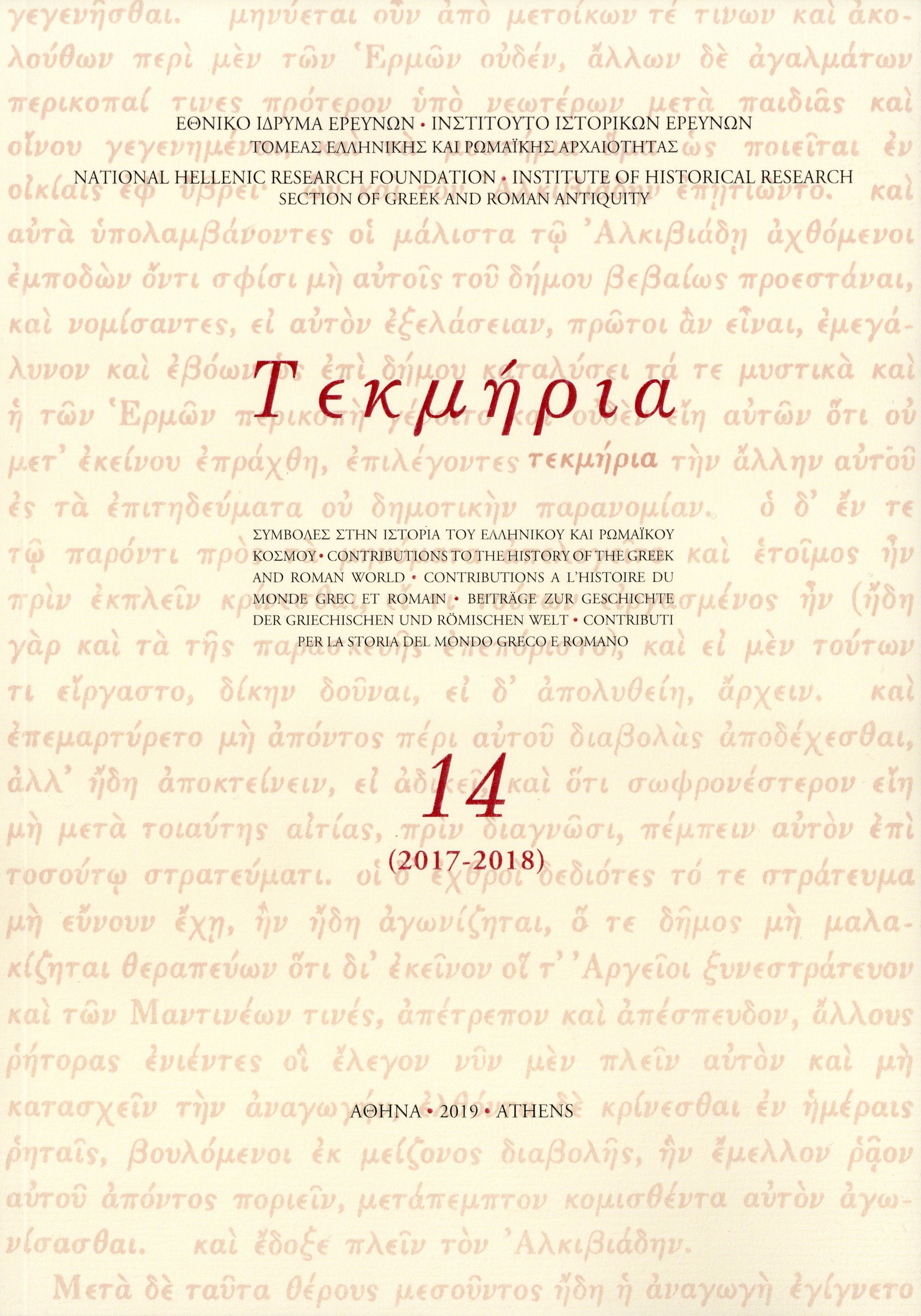Proskynēsis: From a Persian Court Protocol to a Greek Religious Practice
Περίληψη
Greek ambassadors who were granted an audience before the Persian King were required to observe a certain form of court ritual. Although the Persian proper name for this ritual has since been lost to us, the Greeks called this act of homage proskynēsis; a term normally understood to refer to the act of “falling down” and prostrating oneself before the king. At the same time, the Greeks employed a gesture also called proskynēsis, which was performed when addressing a divine entity. These two acts, while different in their functions, shared the same name on the basis that their outward appearances bore a co- incidental likeness to each other. Greek ambassadors, who would have come to Susa for the purpose of petitioning assistance from the Great King, were rigorously hesitant to follow the Persian practice, arguing that the religious practice of proskynēsiswas reserved exclusively for the divine among them. In this paper, I endeavour to elucidate the true nature of this Persian court pro- tocol, and to show why the Greeks were so unwilling to perform this ceremo- nial act. I conclude that the normal posture of the Persian proskynēsis was most represented by that of a bow with a hand raised up to the mouth, the depth of the bow being dependent on the ethnicity of those performing it and their relative status. In contrast to the Greek version, this Persian proskynēsiswas a rather secular practice, serving to authenticate social hierarchy between su- periors and inferiors. Even though some of the Greek ambassadors must have been aware of this, or perhaps as a direct result of this understanding, they remained loath to accept the insult that offering proskynēsiswould cause to the belief of their perceived freedom from Persian subjugation.
Λεπτομέρειες άρθρου
- Πώς να δημιουργήσετε Αναφορές
-
Abe, T. (2018). Proskynēsis: From a Persian Court Protocol to a Greek Religious Practice. Τεκμήρια, 14, 1–45. https://doi.org/10.12681/tekmeria.14682
- Τεύχος
- Τόμ. 14: (2017-2018)
- Ενότητα
- Άρθρα

Αυτή η εργασία είναι αδειοδοτημένη υπό το CC Αναφορά Δημιουργού – Μη Εμπορική Χρήση – Παρόμοια Διανομή 4.0.
Οι συγγραφείς των άρθρων που δημοσιεύονται στα Τεκμήρια διατηρούν τα δικαιώματα πνευματικής ιδιοκτησίας επί των άρθρων τους, παραχωρώντας στο περιοδικό το δικαίωμα της πρώτης δημοσίευσης. Άρθρα που δημοσιεύονται στα Τεκμήρια μπορούν να χρησιμοποιούνται ελεύθερα για μη κερδοσκοπικούς σκοπούς, χωρίς δικαίωμα τροποποίησης (δημιουργία παράγωγου έργου), με αναφορά στο συγγραφέα και στην πρώτη δημοσίευση. Το Εθνικό Ίδρυμα Ερευνών διατηρεί το δικαίωμα να δημοσιεύει, να αναπαράγει, να παρουσιάζει στο κοινό, να διανέμει και να χρησιμοποιεί άρθρα που δημοσιεύονται στα Τεκμήρια σε οποιοδήποτε μέσο και μορφή, είτε μεμονωμένα είτε ως μέρη συλλογικών έργων, για όλο το χρόνο διάρκειας προστασίας της πνευματικής ιδιοκτησίας και για όλες τις χώρες του κόσμου. Αυτό περιλαμβάνει, ενδεικτικά και όχι αποκλειστικά, το δικαίωμα δημοσίευσης των άρθρων σε τεύχη του περιοδικού Τεκμήρια, αναπαραγωγής και διανομής μεμονωμένων αντιγράφων των άρθρων, αναπαραγωγής ολόκληρων των άρθρων σε άλλη έκδοση του ΕΙΕ, και αναπαραγωγής και διανομής των άρθρων ή της περίληψης τους με χρήση πληροφορικού συστήματος αποθετηρίου.



